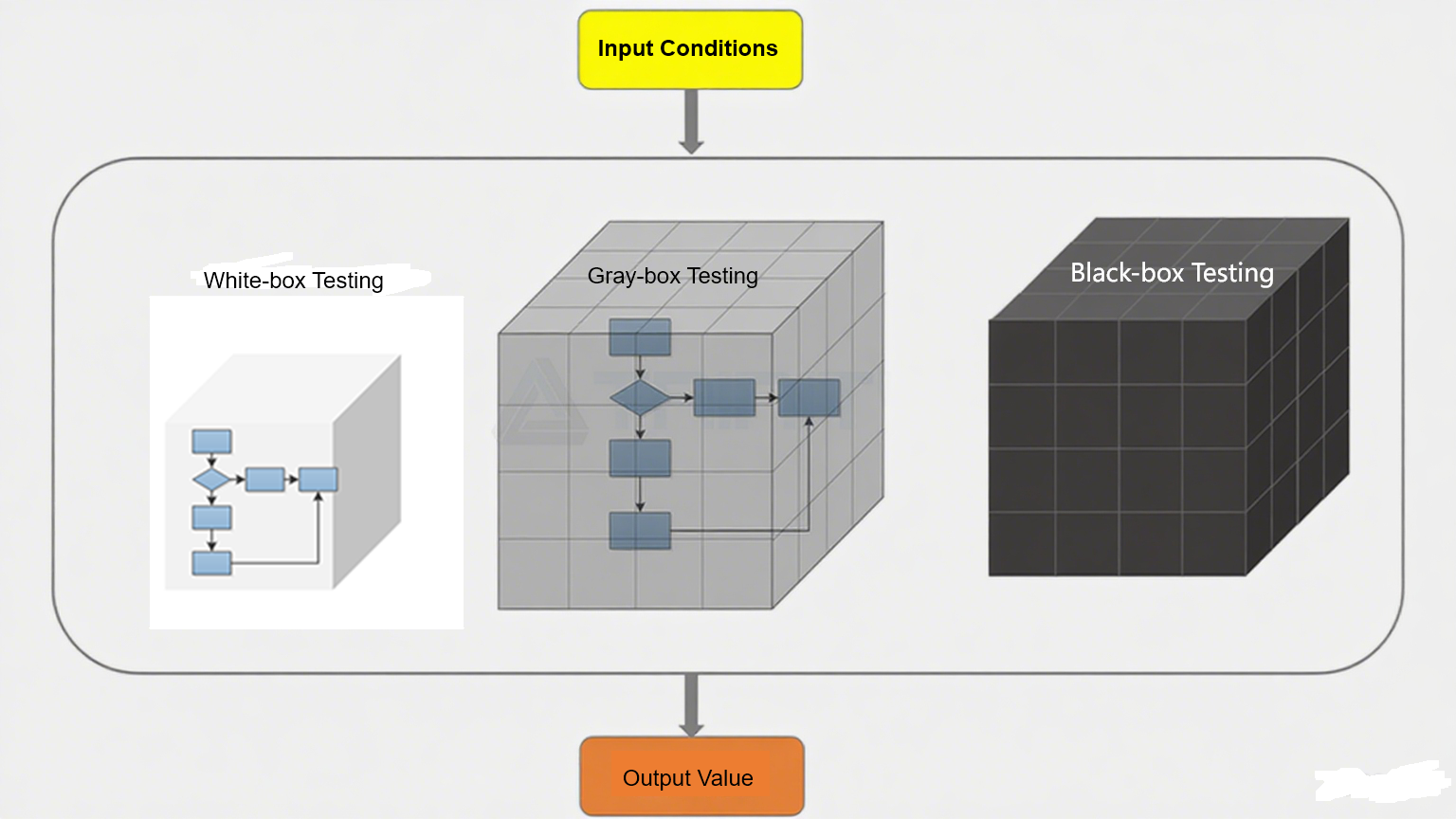What is “Gray-box Testing”?
Gray-box testing is a colloquial term that refers to a testing method that falls between the more familiar concepts of “white-box testing” and “black- box testing.” Gray-box testing is often used in the integration testing phase of applications, focusing not only on the correctness of input and output values for the integrated system, but also on analyzing, monitoring, or verifying the internal execution logic of the program.

A common method of gray-box testing is to analyze, measure, and verify the internal execution process of software using various techniques such as interception, debugging, logging, or signal monitoring during the execution of the application system, there by achieving a more comprehensive detection of internal defects in the software. The objectives of gray-box testing may vary depending on the application.
For embedded applications with high reliability requirements, the main objectives of gray-box testing include:
• Monitoring and verifying the internal execution paths of the software
• Detection and optimization of execution time performance for tasks, modules, or functions
• Tracking and measurement of intermediate states such as intermediate variables, processes, CPU utilization, and output signals
• Coverage analysis of the software testing process
For host computer software or web applications, gray-box testing often includes broader objectives such as security vulnerability detection, stress testing, and software composition analysis.
Why conduct gray-box testing?
Because,
• Black-box testing focuses on the correctness of the system's input/output interfaces but cannot analyze or locate errors within the application.
• White-box testing can rigorously test each function/module individually but cannot identify defects in system integration and has low testing efficiency.
Gray-box testing effectively addresses the shortcomings of both approaches, balancing testing efficiency while providing insight into the system's internal execution process. Gray-box testing may not yet be as widely and standardizedly applied to common development processes as “white-box testing” and “black-box testing,” but the concepts and methods of gray-box testing may not be unfamiliar to most software developers, such as using a debugger for single-step execution to observe program logic or manually inserting print() statements to obtain execution logs. To integrate gray-box testing into development processes, what is needed is an integrated, user-friendly, and automated solution.
Demands and Challenges
-
Manual gray-box testing is too inefficient, such as single-step debugging or manually inserting print() output logs, and it consumes a lot of system resources, making it difficult to locate occasional, unpredictable bugs.
-
Logging methods make data collection, analysis, and reuse difficult, and lack effective, intuitive analysis tools for massive amounts of data.
-
Time performance testing mainly relies on instruments such as oscilloscopes. Repeated iterations are time-consuming and labor-intensive, and performance analysis of internal software modules is cumbersome and makes it difficult to locate the root cause of problems.
-
Testing methods are too scattered to form a standardized continuous testing process for gray-box testing.
Solutions
-
Utilizing the DT10 gray-box testing and system dynamic tracking debugging tool's minimalistic insertion algorithm, test points are automatically inserted into the software internally. By detecting these test points, the execution process within the software can be tracked. The insertion expansion rate is low and efficiency is high.
-
For embedded systems, it provides data transmission methods based on multiple standard interfaces, including Ethernet ports, serial ports, GPIO/SPI, asynchronous bus ports, CAN bus, etc., with low system resource consumption.
-
DT10 supports continuous testing for up to one month and is suitable for gray-box testing of software systems with reliability requirements.
-
Based on test data collected by DT10 Dynamic Tracer hardware, it provides rich analysis, verification, and reporting functions, including complex defect traceback debugging, performance testing, CPU load analysis, variable monitoring, memory analysis, logic analysis, hardware monitoring, and coverage statistics, as well as other commonly used gray box testing functions.
-
DT10 is widely applicable to hardware environments and supports testing in multi-core and multi-CPU environments.
-
Highly applicable to embedded environments, regardless of software development compiler and target operating system.
RELATED RESOURCES









